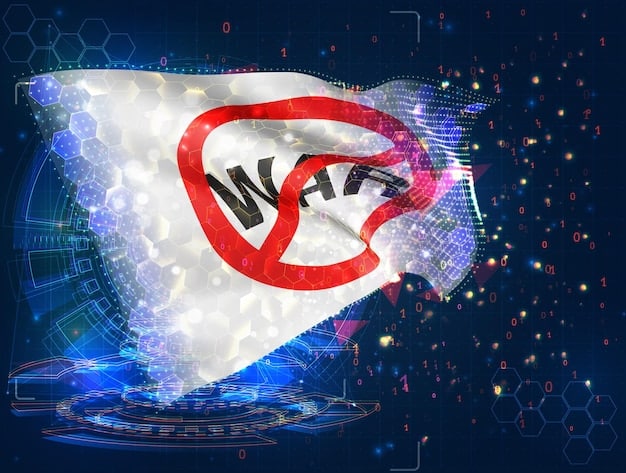Effective Strategies to Manage Trolls and Toxic Behavior in Online Communities

Proactively addressing and mitigating toxic behavior and internet trolls is crucial for maintaining a healthy and thriving online community environment, focusing on practical measures and effective moderation techniques.
In the expansive and interconnected digital landscape, online communities have become vibrant hubs for shared interests, discussions, and support. However, this communal space often faces the disruptive presence of internet trolls and toxic behaviors, which can quickly erode the positive atmosphere. Thankfully, there are practical solutions: how to handle trolls and toxic behavior in your online community effectively, ensuring these spaces remain safe, inclusive, and productive for everyone.
Understanding the Landscape of Online Toxicity
The digital realm, while offering unparalleled connectivity, also presents unique challenges, particularly when it comes to human interaction. Trolls and toxic individuals are not merely annoyances; they represent a significant threat to the health and longevity of any online community. Recognizing their tactics and motivations is the first step toward effective mitigation.
Trolling, at its core, is the act of deliberately provoking arguments or upsetting people on the internet, often for amusement. It manifests in various forms, from subtle provocations to outright harassment. Toxic behavior, a broader term, encompasses any actions that negatively impact the community’s well-being, including spamming, bullying, hate speech, and doxxing.
Identifying different types of trolls
Understanding the different personas of trolls can inform how communities respond. Some seek attention, others thrive on chaos, and a few are genuinely malicious. Knowing what you’re up against makes it easier to strategize.
- The Attention Seeker: Posts controversial or inflammatory comments purely to get a reaction.
- The Provocateur: Enjoys starting arguments and debates, often for intellectual sport or to waste others’ time.
- The Malicious Troll/Cyberbully: Aims to genuinely hurt or distress individuals through insults, threats, or harassment.
These behaviors often escalate if left unchecked, creating a domino effect where more users feel comfortable exhibiting similar conduct. This can lead to a significant drop in engagement from constructive members who grow tired of the negativity.
The impact on community health
The cumulative effect of unchecked toxicity is profound. It can drive away valuable members, stifle genuine conversation, and transform a once-thriving space into a desolate or intimidating environment. Community managers spend disproportionate amounts of time on moderation, detracting from growth and engagement initiatives.
Ultimately, a healthy online community thrives on mutual respect and shared positive experiences. When this foundation is undermined by toxic elements, the entire structure weakens. Proactive measures are essential to preserve the integrity and value of these digital spaces.
Establishing Clear Community Guidelines and Policies
A robust set of community guidelines is the cornerstone of any effective strategy against trolls and toxic behavior. These rules serve as a social contract, outlining expected conduct and the consequences for non-compliance. Clarity and accessibility are paramount, ensuring every member understands the boundaries.
These guidelines are not merely formalities; they are living documents that must be actively communicated, understood, and enforced. They provide the framework for moderation decisions and empower community members to self-regulate and report issues confidently.
Crafting comprehensive rules of conduct
The rules should strike a balance between being concise enough to be easily digestible and comprehensive enough to cover a wide range of potential issues. They should explicitly define what constitutes unacceptable behavior and why, avoiding ambiguity.
- Be Specific: Instead of “be nice,” specify “no hate speech or personal attacks.”
- Cover Diverse Behaviors: Include guidelines on spam, self-promotion, harassment, doxxing, and illegal activities.
- Explain the “Why”: Briefly explain why certain behaviors are prohibited, linking them to community values.
Regularly reviewing and updating these guidelines is also crucial, as online behaviors and community dynamics evolve. What was considered acceptable five years ago might be toxic today, and vice-versa.
Implementing a transparent enforcement framework
Beyond simply having rules, communities must clearly articulate how those rules will be enforced. This transparency builds trust and helps members understand the consequences of their actions. An escalating system of warnings, temporary bans, and permanent bans is often effective.
Each step in the enforcement process should be clearly defined, from how violations are reported to how appeals are handled. This reduces perceptions of arbitrary judgment and encourages consistent application of policies. Consistency is key; showing favoritism or inconsistency can undermine the entire system.
The goal is to create an environment where members feel secure that disruptive behavior will be addressed fairly and effectively, fostering a sense of shared responsibility for maintaining a positive community space.
Empowering Moderation Teams with Tools and Training
Effective moderation is the backbone of a healthy online community. It’s not just about reacting to incidents but also about proactively shaping the environment. Equipping moderation teams with the right tools, knowledge, and support is critical for their success and the community’s well-being.
Moderators often bear the brunt of online negativity. Giving them the resources to do their job efficiently and safely protects them and ensures that community standards are upheld consistently. This involves more than just software; it includes continuous development and psychological support.
Leveraging technology for efficient moderation
Modern moderation tools offer a range of functionalities that can significantly reduce the burden on human moderators. Automation can catch spam and obvious violations, freeing up human attention for more nuanced issues. AI-powered algorithms can flag potentially toxic content, though human review remains essential for context.
- Keyword Filters: Automatically flag or block certain words or phrases.
- Spam Detection: Identify and remove repetitive or unsolicited content.
- Reporting Tools: Easy-to-use systems for members to report problematic content.

Beyond these, tools that allow for quick review of reported content, direct messaging with users, and transparent logging of moderation actions are invaluable for maintaining an organized and accountable moderation process. The choice of tools should align with the community platform and its specific needs.
Training and supporting your moderators
Even with advanced tools, human judgment is irreplaceable. Moderators need comprehensive training on community guidelines, conflict resolution, and de-escalation techniques. Understanding the nuances of online communication and potential cultural differences is also crucial.
Equally important is providing a support system for moderators. They often face abusive content and direct attacks, which can take a toll on their mental well-being. Regular check-ins, peer support groups, and access to mental health resources can prevent burnout and ensure their longevity in the role.
A well-trained and supported moderation team is more confident, consistent, and effective, creating a virtuous cycle that reinforces positive community behavior and deters toxic interactions.
Fostering a Culture of Positive Engagement and Self-Correction
While rules and enforcement are necessary, a truly resilient online community also cultivates a proactive culture of positive engagement. This goes beyond merely punishing bad behavior; it actively promotes the good, encouraging members to become part of the solution rather than just observers.
When community members feel a sense of ownership and belonging, they are more likely to uphold standards and contribute positively. This “social immune system” is critical for reducing the reliance on direct moderation and fostering a self-sustaining healthy environment.
Encouraging positive contributions and peer moderation
Active encouragement of constructive dialogue, helpfulness, and respectful disagreement can significantly overshadow negative interactions. Recognizing and rewarding positive contributors through badges, special roles, or public acknowledgment reinforces desirable behaviors.
- Highlight Positive Content: Feature excellent posts or helpful discussions.
- Empower Experienced Users: Designate trusted members as community helpers or peer moderators with limited permissions.
- Organize Positive Initiatives: Host Q&A sessions, skill-sharing events, or themed discussions.
Peer moderation, where community members flag inappropriate content or even informally guide newcomers, can extend the reach of moderation efforts and build a collective responsibility for maintaining decorum. This decentralization of responsibility can be highly effective when handled with care and clear guidelines.
Promoting respectful discourse and conflict resolution
Disagreements are inevitable in any community, but the way they are handled determines whether they become toxic or constructive. Promoting respectful discourse means encouraging members to debate ideas, not attack individuals, and to engage with empathy.
Providing clear pathways for conflict resolution, such as private messaging with moderators or designated channels for disputes, can prevent minor disagreements from escalating into major issues. Educational initiatives on active listening, respectful argumentation, and understanding different perspectives can also be highly beneficial.
Ultimately, a community that values and actively promotes positive engagement becomes less susceptible to toxicity, as members collectively commit to upholding its shared values.
Handling Specific Toxic Behaviors and Trolls: Practical Approaches
While general guidelines and moderation are essential, specific types of toxic behavior require tailored responses. A one-size-fits-all approach often falls short. Understanding the nuances of immediate intervention versus long-term strategies for particular behaviors can make all the difference in maintaining community harmony.
Each type of negative interaction, from subtle gaslighting to overt harassment, demands a thoughtful and appropriate response. The goal isn’t just to stop the immediate threat but also to send a clear message to the community about what is and isn’t tolerated.
Strategies for dealing with spam and unsolicited content
Spam is often automated but can also be human-driven. Automated filters are the first line of defense. For human spammers, a swift ban is usually warranted, as their intent is rarely to contribute positively.
- Automated Filters: Implement strong keyword, link, and content filters.
- Rapid Deletion: Remove spam as soon as it’s detected.
- IP/User Bans: Permanently block persistent spammers.
It’s important to differentiate between genuine, relevant self-promotion (if allowed by guidelines) and outright disruptive spam. Clear guidelines on self-promotion can prevent accidental violations.
Addressing hate speech, harassment, and personal attacks
These are among the most damaging forms of toxic behavior and require immediate and unequivocal action. Community guidelines must explicitly condemn such actions, and moderation teams should be empowered to act decisively.
For hate speech and severe harassment, the “don’t feed the troll” advice often falls short. Direct intervention, content removal, warnings, and swift bans are often necessary. In cases involving threats or illegal activities, reporting to law enforcement should be considered.
The community should be aware that such behaviors have zero tolerance. This sends a strong message that the community prioritizes the safety and well-being of its members above all else. Educating the community on how to report such incidents confidentially and safely is also crucial.

Sometimes, what appears as toxicity might simply be a misunderstanding or a bad day for a user. Moderators must be trained to assess intent and context, offering a warning or private conversation for minor infractions before resorting to bans for more severe or repeated offenses.
Building Resilience and Adapting to New Challenges
The digital landscape is constantly evolving, and so are the methods employed by those who seek to disrupt online communities. Therefore, building resilience and a capacity for continuous adaptation is not just advantageous but essential for long-term community health.
A static approach to community management will eventually falter against dynamic threats. Communities must cultivate a proactive mindset, anticipating potential issues and preparing mechanisms to address them, rather than merely reacting retrospectively.
Regularly reviewing and updating policies
The effectiveness of community guidelines can wane over time if they are not regularly re-evaluated against current trends in online behavior. What constitutes harassment or spam evolves, and policies must keep pace to remain relevant and effective.
- Annual Reviews: Schedule a formal review of all community guidelines and moderation policies.
- Feedback Loops: Solicit input from community members and moderators about emerging issues.
- Monitor Trends: Stay informed about new forms of online trolling and toxicity.
This continuous refinement ensures that the community remains prepared for emergent threats and that its defensive strategies are always fit for purpose. It also reinforces the idea that the community’s well-being is an ongoing priority.
Learning from incidents and public discourse
Every incident, whether a minor rules violation or a major toxic outbreak, offers an opportunity for learning. Analyzing what happened, how it was handled, and what could have been done better provides invaluable insights for future prevention and response.
Engaging with broader public discourse on internet safety, digital ethics, and online behavior can also inform community strategies. Learning from other communities’ successes and failures can provide a broader perspective and highlight best practices.
Establishing clear communication channels within the moderation team and with community leadership to debrief after significant incidents is vital. This reflective practice fosters a culture of continuous improvement, turning challenges into opportunities for growth and strengthening the community’s overall resilience.
The Role of Community Leaders and Members in Cultivating Healthy Spaces
While moderation teams are crucial, the ultimate responsibility for a healthy online community rests with every participant. Leaders set the tone, and members reinforce the culture. This collective effort creates an environment where toxicity finds little fertile ground.
Community leaders, whether administrators, founders, or prominent members, must embody the values and standards they wish to see. Their actions and responses serve as a powerful example, shaping the perception and behavior of the entire community.
Leading by example and fostering constructive dialogue
Leaders should actively model the desired behavior, participating in discussions respectfully, de-escalating tensions, and showing empathy. Their responses to problematic content should be consistent with stated policies, demonstrating fairness and resolve.
- Active Participation: Engage genuinely in discussions, showcasing positive interaction.
- De-escalation Skills: Demonstrate how to respond to provocative comments without fueling conflict.
- Transparency: Be open about moderation decisions where appropriate, fostering trust.
Beyond individual actions, leaders also have a role in structuring discussions and creating spaces that naturally encourage constructive dialogue. This might involve setting up themed discussion threads, ‘ask-me-anything’ sessions, or dedicated feedback channels.
Empowering members to contribute to a safer environment
Members should not just be passive recipients of rules; they should feel empowered to actively contribute to the safety and positivity of their community. This involves providing easy-to-use reporting mechanisms and assuring them that their reports will be taken seriously.
Educating members on what constitutes appropriate reporting versus “witch hunts” or personal attacks is also important. Encouraging them to tag moderators or use private reporting tools rather than public shaming helps maintain a civil atmosphere even when addressing issues.
A thriving community is one where every member feels a part of the solution, equipped with the knowledge and tools to identify and appropriately respond to toxicity, thereby reinforcing the community’s values from within.
| Key Point | Brief Description |
|---|---|
| 📜 Clear Guidelines | Establish and enforce comprehensive rules of conduct transparently to set expectations. |
| 🛡️ Empower Moderators | Provide tools, training, and support to moderation teams for efficient and effective action. |
| 🤝 Culture of Positivity | Foster constructive engagement, peer moderation, and respectful discourse among members. |
| 🔄 Adapt & Evolve | Continuously review policies and learn from incidents to build community resilience against new threats. |
Frequently Asked Questions
▼
The immediate best response to a troll often depends on their intent. For mild provocations, ignoring them (don’t feed the troll) or a brief, factual correction might suffice. For more severe or persistent trolling, reporting their content to moderators is the most effective action to ensure community guidelines are enforced and the behavior is addressed.
▼
Community guidelines prevent toxicity by clearly defining acceptable and unacceptable behaviors, setting expectations for all members. Transparent rules provide moderators with a basis for enforcement, deterring potential offenders. When members understand the boundaries and consequences, they are more likely to self-regulate and contribute positively, fostering a healthier environment.
▼
Technological tools play a vital role in efficient moderation by automating repetitive tasks like spam detection, content filtering, and flagging potentially problematic posts. This frees up human moderators to focus on nuanced situations requiring judgment and context. AI-powered tools can also help identify patterns of toxic behavior, allowing for proactive intervention before issues escalate.
▼
Community members can significantly help combat toxic behavior by leading by example, engaging respectfully, and actively reporting content that violates guidelines. By not engaging with trolls or escalating conflicts, they remove the oxygen for toxic behavior. Participating in positive discussions and welcoming new members also helps cultivate a strong, resilient community culture.
▼
Completely eliminating trolls from an online community is highly challenging, if not impossible, due to the open nature of the internet. However, the goal is not total elimination but effective management and mitigation. By implementing robust guidelines, empowering moderators, fostering positive culture, and adapting strategies, communities can significantly reduce the impact and prevalence of toxic behavior, creating a healthier space.
Conclusion
Effectively managing trolls and toxic behavior in online communities requires a multi-faceted approach, blending clear definitions, robust enforcement, and a proactive cultivation of positive culture. By establishing transparent guidelines, empowering dedicated moderation teams, and fostering a shared sense of responsibility among all members, communities can build resilience. This commitment to maintaining a respectful and engaging environment ensures that online spaces remain valuable platforms for genuine connection and constructive interaction, rather than devolving into arenas for negativity.





